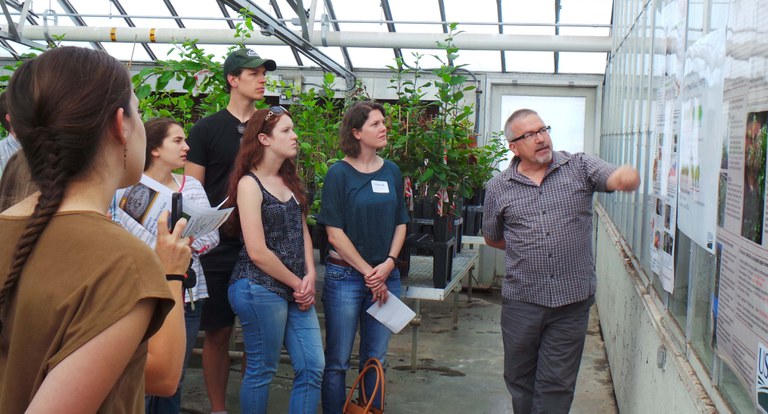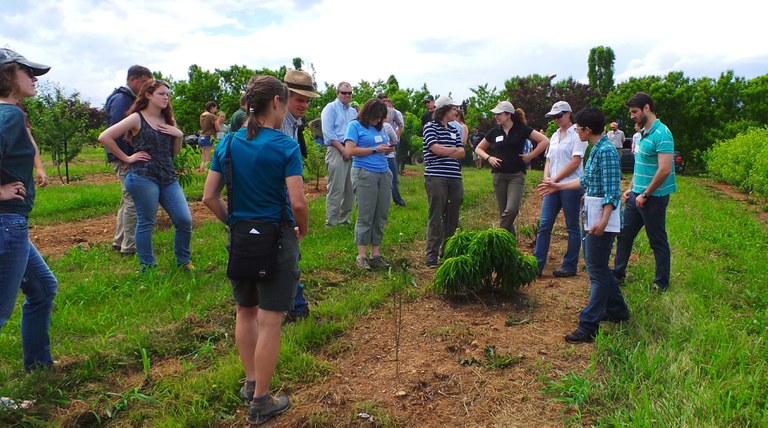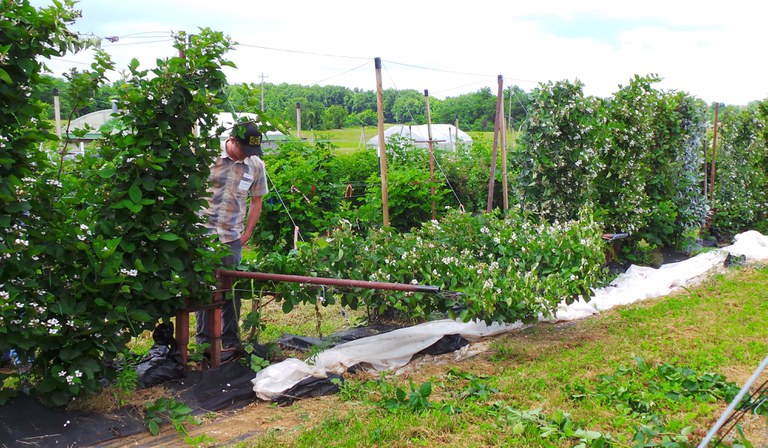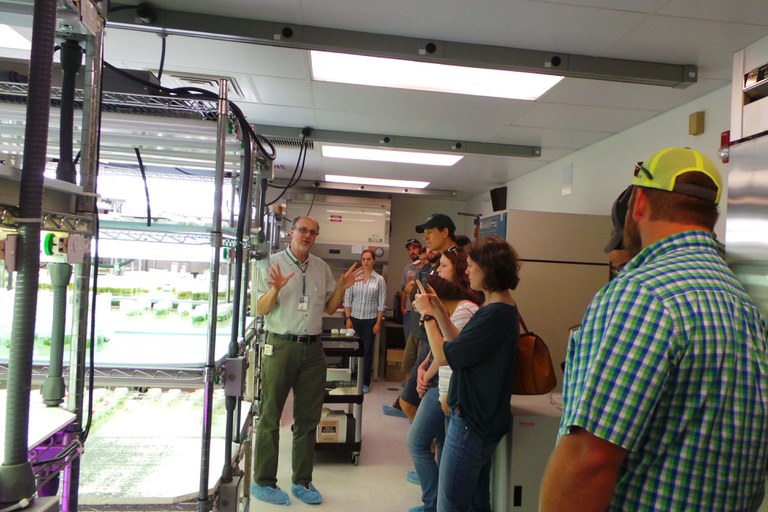Ask any young grower about producing fruit, and they will likely tell you it is a rewarding career that can also be challenging at times. To help producers combat these challenges, a team of scientists work diligently at the USDA-ARS Appalachian Fruit Research Station in Kearneysville, WV.
These scientists work on a wide variety of projects, ranging from fruit breeding to orchard automation, all with the goal of making fruit production in the region more efficient and prosperous. On June 7th, young growers from four Mid-Atlantic states - Maryland, Pennsylvania, Virginia, and West Virginia - toured the station's lab and research orchards to learn more about these projects.
The tour began with introductions from station director Dr. Tracy Leskey and YGA co-chairs Ben Lerew and Andrew Schwalm. After a pizza lunch, tours began in the research labs to learn how fruit breeders create new pear, apple, and stone fruit varieties. The varieties the station releases not only taste great, but they are also resistant to many common fruit diseases. In a tissue culture lab, Dr. Tim Artlip passed around petri dishes as he discussed how tissue culture propagation reduces the amount of time it takes for new varieties to be developed, as it allows for rapid screening of newly bred plant materials.
The group then went into two of the lab's greenhouses. As the group was surrounded by containers of wild apple species, Dr. Jay Norelli spoke about how his apple breeding program will lead to new disease resistant varieties in nearly half the time of previous breeding programs. Doug Raines and Dr. Ralph Scorza then showed the group a similar study being performed with European plums, and the group discussed marketing strategies to get more consumers interested in plums. To see the end results of the breeding process, Dr. Richard Bell described the station's most promising pear variety releases, all of which are resistant to fire blight.
Heading out into the orchard, the group observed an automated tree visioning unit. As the robotic arm swung around on its platform, a camera took photos and stitched them together to create a three dimensional view of the tree. Dr. Amy Tabb plans to add a robotic pruning arm to the machine in the near future, so the robot can see and prune trees on its own.
To better understand tree architecture in stone fruit, Dr. Chris Dardick planted an orchard of peaches and plums exhibiting many unique growth habits. Trees ranged from tall and upright to short, two-ft tall trees. He is currently looking through the DNA of these trees to understand which genes are involved in controlling tree architecture. These traits range from branching angle to root depth, many of which are extremely important to good crop growth.
The group then toured some of the station's small fruit projects, starting at Dr. Fumi Takeda's new blackberry training system. This system is built on a rotatable cross-arm trellis, and helps protect the plants during cold winter weather. Growers walked over to a high tunnel to observe strawberries being protected from disease using ultraviolet light. Dr. Wojciech Janisiewicz believes the light can be used to help reduce the incidence of a number of foliar diseases within the greenhouse.
The tour concluded back in an apple orchard, where Brent Short demonstrated new traps being developed to monitor brown marmorated stink bugs. By using a series of these traps throughout the orchard blocks, stink bug populations can be more effectively monitored to see when and where they are present within the orchard. This technology helps growers better plan their control strategies.
Young growers from across the Mid-Atlantic not only had an opportunity to learn about this exciting research, but were also able to network with the scientists and other growers to discuss what they are doing on their own operations. Many of the ideas shared will likely be incorporated on their orchards, helping make fruit growing an even more rewarding endeavor. The Young Grower Alliance would like to extend our gratitude to Dr. Leskey and all of the USDA scientists and staff for showing us their exciting work!

The group learns about new techniques in apple breeding from Dr. Jay Norelli, surrounded by some of the wild Malus species in the greenhouse.

In Dr. Chris Dardick's tree architecture block, stone fruit exhibit a variety of growth habits, including a peach tree that was growing only two ft high.

A young grower looks over Dr. Fumi Takeda's rotatable cross-arm blackberry trellis system. This system protects the berries from the cold during the winter, and allows for the fruit to grow on one side of the trellis.

Brent Short explains a new type of trap being used to monitor for the brown marmorated stink bug. With these traps, growers can better determine when stink bugs are present in their orchard, allowing growers to potentially reduce the number of times they treat a block.
Contact us

Social Media
Contact us



